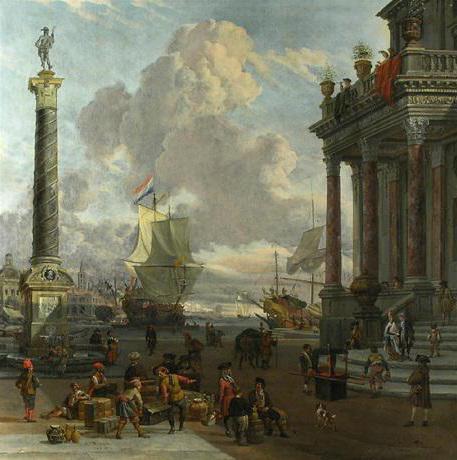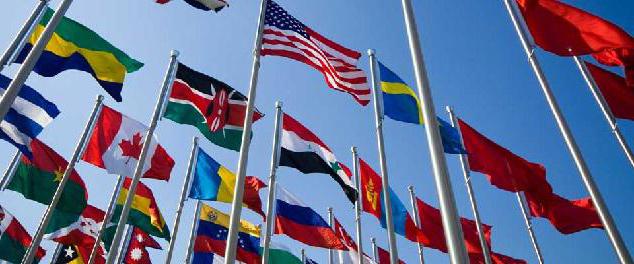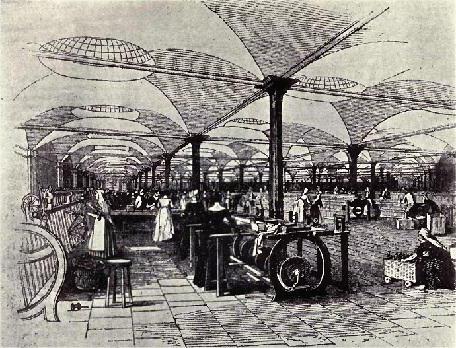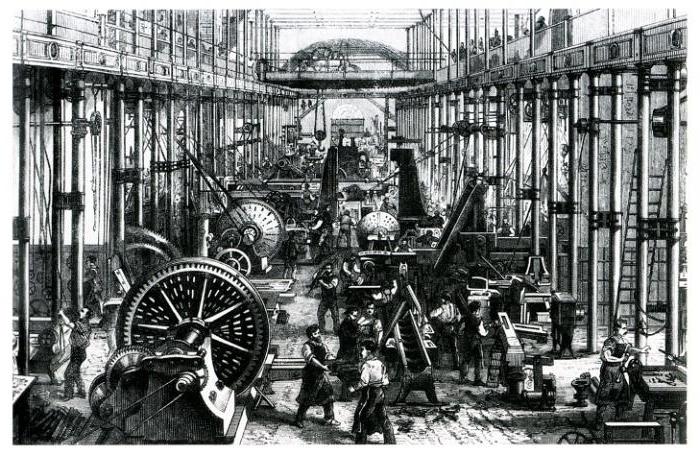International trade originated in antiquity. It has evolved over several millennia, using new technological advances and scientific discoveries. Gradually, the totality of relations between countries formed the world economy. Then the phenomenon of the international division of labor arose. Many theoretical economists put forward their hypotheses about how it is more profitable to trade with neighbors within a single world economy.
Main features
The modern world economy appeared due to the international division of labor and cooperation. Today, each country depends on its share of participation in international trade, as well as on the movement of labor and capital. If the state is isolated, it deprives itself of innovation and credit. In this state, the country slows down in its development, and later can even survive the economic crisis.
World economy and international trade is a multifaceted and complex system that is influenced by many factors. The universal economy is a combination of national economies, interconnected by various relationships. Trends in the development of the world economy consist of the size and quality of production forces.

The difference with the domestic economy
Foreign economic relations resemble domestic transactions. Their goals are the same: to be useful to consumers and generate revenue for producers. But there are significant differences between them, which are determined by state borders and national sovereignty. Stages of development of the world economy century after century erased these lines, however, even in the modern deeply interconnected world, some of them continue to exist.
Firstly, the problems of the development of the world economy are the existence of many national currencies. Settlements with such a variety must be made in one of them, which forces the parties to convert. Secondly, national governments have the ability to impose their own restrictions on transactions with foreign partners, while not applying them on the domestic market. These are import quotas, tariffs, export voluntary limits, export subsidies. All of the above affects economic development world economy.
Finally, thirdly, each country has a different fiscal and monetary policy, which affects inflation, the level of employment, etc. If these measures are the same within the state, then they are radically different from each other at the international level. These differences affect the competitiveness of the services and goods of one country in the market of another.

Origin
The globalization of the world economy originates in international trade, the history of which is estimated at several millennia. In the pre-industrial era, the main paradigm of economic development was the idea of “supportive consumption”. The dominant position was occupied by subsistence farming. Everywhere was the usual reproduction of goods. This system existed in primitive, slave and feudal society. The ruling classes were enriched by coercion of peasants and slaves.
New stages in the development of the world economy became possible after the great geographical discoveries in the XV – XVI centuries. Simultaneously with these grandiose events, a gradual decomposition of feudal society took place.Great geographical discoveries became possible thanks to the development of the urban economy, commodity-money relations, science and technology. Europeans received a significant incentive to discover and explore new lands - gold. Trade has become maritime and oceanic. In the turnover appeared new, previously unknown products and materials. European capitalism, independent of the state, began to develop, which penetrated into industry and accelerated the development of manufactory production.
In the sixteenth century, the territory known to Europeans increased six times. Giant prospects for the development of trade appeared, and trade routes moved from the Atlantic to the Indian Ocean. The inland Mediterranean Sea has lost its former meaning. Ports on its shores (Venice, Genoa, etc.) fell into natural decline. At the same time, cities with access to the oceans rose: Seville, Lisbon, Antwerp, Amsterdam and London. The increase in the gold flow from America caused a price revolution - prices rose by 200-500%. Such a leap allowed the merchants and merchants to quickly enrich themselves. Even peasant speculators in food and raw materials got hold of money. At the same time, the wallets of the nobility, whose wages were devalued, were noticeably impoverished.
The search for new markets began in the Old World. The leading economy turned out to be England. This state has embarked on the path of colonialism. The British for some time seized the monopoly right to trade with Russia through their Moscow company. Such contacts were the first examples of new economic ties between distant ties. It was in the 16th century that Russia became an important player in the international market. In the world economy, its rare goods and resources were valued.

Industrial Revolution
At the end of the 18th century, the Industrial Revolution began in Western Europe, which served as the impetus for the beginning of a new stage in the development of the world economy. Its most important feature was industrialization - the transition from an agrarian society to an industrial one. Thanks to the use of machines in the production of new products on the market. Rapid economic growth began, which significantly widened the gap between advanced and backward countries. Urbanization has occurred - a massive influx of people into cities.
All stages of development of the world economy differed from each other in the level of development of communications. Thus, the Industrial Revolution gave mankind railways. The first steam locomotive appeared in 1804. By the end of the 19th century, railroads became the main communication ground network used in trade. Then the ships appeared in the sea. Modern vehicles were much faster than their predecessors. They began to be used to strengthen and increase economic ties.
Overgrown enterprises were combined into an economic complex. This new phenomenon in the economy made it possible to produce goods even faster and ship them to the final consumer. Acquired tremendous importance industrial capital. With these funds, new projects were developed. World economy and international trade have taken on ever more modern forms.

Next stage
At the beginning of the XX century, the modern development of the world economy was faced with many contradictions. The main one was that economic relations between the countries were based on military force, and not on capital. The rivalry between the great powers that controlled most of the international market led to enormous bloodshed. After two world wars and changes in previous trade relations in the world economy, a confrontation developed between the two systems - capitalism and socialism. The conflict was not only economic, but also ideological and political in nature.
The Cold War ended with the victory of capitalism - today 90% of world trade falls on capitalist economy.Any stages of the development of the world economy were characterized by the appearance of new players in the market. So, in the 60s. XX century in the world economy appeared developing countries that did not belong to the familiar West. These were the new industrial economies of Southeast Asia: Singapore, Hong Kong, South Korea and Taiwan (they became known as the four small dragons), as well as the states of Latin America (Argentina, Brazil, Mexico).
At the turn of the 20th and 21st centuries Thanks to the development of new technologies and means of communication, the world economy has reached its maximum historical integrity. Dynamically developing economies are integrated with each other. When the past main stages of development of the world economy were left behind, international capital and production acquired global proportions. Such an international economy is based on generally accepted principles of market relations.
The concept of the international division of labor
Today, the international division of labor (MRI) is the most important basis for the cohesion of national economies, from which a single global economy grows. What is this phenomenon? MRI - specialization of a particular country in a particular production. Each region has its own unique product, which is not found elsewhere. This balance allows market participants to exchange goods (sell excess and buy missing).
The modern international division of labor covers services, knowledge, products of scientific, technical, industrial and other complexes. Thanks to MRI, all countries have reduced production costs, and consumers get the most satisfaction from their needs. With this separation, the world economy has been progressing at an accelerated pace for many years. All states participate in this system, regardless of their economic development. It can be the USA, France, Kenya, Australia, Paraguay, Russia. In the world economy, each country has its own niche. If the Americans export computers, the Kenyans export coffee, and Russia exports gas.

Types of MRI
According to the classical classification, the international division of labor has three main types. The first is a general MRI. This is a division between the large areas of intangible and material production: industry, communications, transport, etc. In fact, this is a specialization in industries. According to her, all countries of the world are divided into raw materials, industrial and agricultural.
The private division of labor is associated with subject specialization and covers industries and sub-sectors of large areas. This is light and heavy industry, agriculture, cattle breeding (export production of finished services and products). A single division of labor is a division within a particular enterprise or enterprises that make up the cyclical system of manufacturing goods, parts and components. This type of MRI is often implemented within the framework of large joint multinational companies operating simultaneously in several countries.
Mercantilism
In the 16th century, mercantilist theory appeared. Its application has shown how international trade helps the development of the world economy. Mercantilists believed that their countries needed to limit imports, while trying to independently produce the missing goods. Export was encouraged, which contributed to the influx of currency. With a positive trade balance, the country received a lot of gold, which increased the size of capital and opened up prospects for significant economic growth.
Mercantilist theory had a serious flaw. Its supporters believed that exporters, making a profit, inflict losses on their competitors in the market, but this idea was not confirmed in practice. At the same time, mercantilism has developed new useful economic instruments, in particular protectionism.Pursuing such a policy, the state stood up for domestic producers, clearing them niches in the market (duties, restrictions, etc. were introduced for foreign competitors).

Theory of Absolute Benefits
The famous English economist Adam Smith was the first to talk about the fact that the effective division of labor allows states to achieve serious progress in the development of production. The scientist wrote about this principle in 1776 in his book "Research on the nature and causes of the wealth of peoples." His considerations formed the basis of the theory of absolute advantages, which replaced the theory of mercantilism. Smith offered a simple formula - to buy from neighbors those goods that are cheaper to buy than to produce. By conducting such trade, both parties receive additional profit and save their own labor resources, which can be spent much more efficiently. These are the absolute benefits.
The above theory has a noticeable minus. A market built on this model, on the one hand, demonstrates the advantages of international trade, but at the same time leaves no room for countries that do not have absolute advantages over their neighbors.

Comparative advantage
The flaw inherent in the theory of absolute advantages has led to a rethinking of the material of Adam Smith. In 1817, another economist of the classical school - David Ricardo - on the pages of the book "Principles of Political Economy and Taxation" proposed his own market model. He recommended that countries import goods whose production costs are higher than those of the exported goods. Later, Ricardo's followers proved the effectiveness of this model with many examples.
The theory of comparative advantage demonstrates how international trade helps the development of the world economy. Economic relations, built on the Ricardo principle, bring profit to all parties to the transaction (although someone inevitably gets more).
The scientist in his study cited a textbook example. In England and Portugal, cloth and wine are produced, while production is cheaper in Portugal. Thus, the country on the Iberian Peninsula has an absolute advantage over the British competitor. However, with the help of mathematical calculations, Ricardo proved that it is more profitable for the Portuguese to export wine, since the cost of this product in the country is much lower. A similar rule applies to English cloth. Putting these circumstances into the big picture, the scientist received a clear and profitable economic course. Portugal and England can exchange cloth and wine with the greatest benefit to each other.








